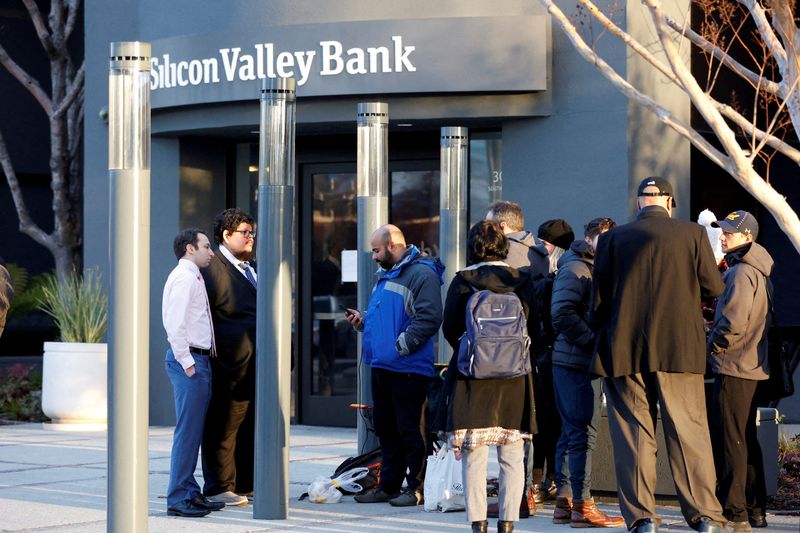By David French and Pete Schroeder
NEW YORK/WASHINGTON (Reuters) - The Federal Deposit Insurance Corporation (FDIC) has retained advisers to sell the securities portfolios that the new owners of failed Silicon Valley Bank and Signature Bank rejected, according to people familiar with the matter.
The portfolios are comprised of low-yielding assets, such as Treasuries and U.S. government agency-backed securities, that the two regional banks amassed while interest rates were close to zero.
If First Citizens Bancshares Inc, the new owner of Silicon Valley Bank, or New York Community Bancorp Inc, which acquired Signature Bank, had assumed the assets, they would have had to realize losses given that interest rates are now much higher than the yield of these assets.
Silicon Valley Bank's and Signature Bank's securities portfolios carry a face value of around $90 billion and $26 billion, respectively, according to regulatory filings and statements by government officials.
The sources spoke on condition of anonymity to discuss confidential information about the sale process. The FDIC declined to comment.
It is unclear how much the FDIC's deposit fund stands to lose on the sale of the portfolios. The fund, used to guarantee deposits at failed lenders, is replenished by a levy on all U.S. banks that are members of the FDIC's deposit insurance scheme.
The FDIC estimates the sale of Silicon Valley Bank and Signature Bank will cost the deposit fund $20 billion and $2.5 billion, respectively. It will release final figures once sales of the loan books of the banks and their securities portfolios are complete.

Some of the loans were passed on to First Citizens and New York Community with backstops from the FDIC, while others are up for sale separately. The FDIC has hired Newmark Group Inc to sell about $60 billion of Signature Bank's loans it retained, Reuters reported this week.
Silicon Valley Bank gave a sense of the potential losses in its securities portfolio on March 8, two days before it failed, when it sold $21.5 billion of it to meet customer withdrawals, realizing a $1.8 billion loss. The portfolio was yielding an average 1.79%, far below the 10-year Treasury yield that at the time was around 3.9%.